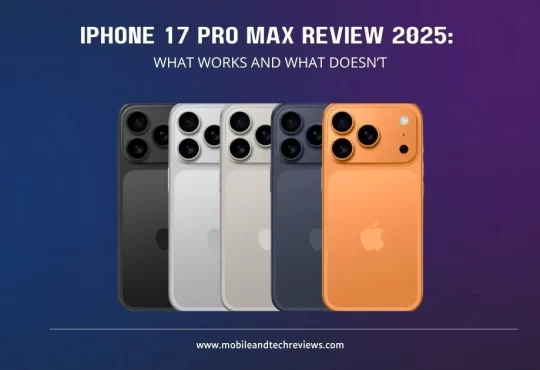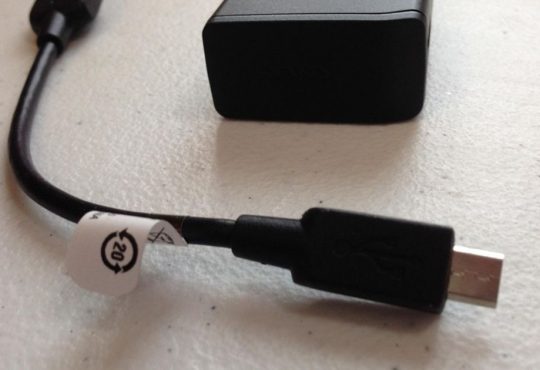The smartphone has been a central part of daily life for over a decade, evolving into a pocket-sized powerhouse connecting millions around the globe. Yet, as technology accelerates toward 2025, innovative devices are emerging that challenge the notion of what a “phone” can be. These cutting-edge gadgets aim not only to replace traditional smartphones but to reimagine communication, productivity, and connectivity in ways that fit modern lifestyles more seamlessly. Here are five futuristic devices pushing beyond the smartphone frontier, each vying to become the next essential tech companion.
5 Futuristic Devices That Could Replace Your Smartphone
1. Wearable Smart Displays
Imagine a world where you never have to reach into your pocket or bag to grab a phone again. Wearable smart displays make this vision a reality by seamlessly integrating digital interaction into your everyday field of view. These devices come in innovative forms, such as sleek, foldable glasses, lightweight visors, or even wrist-mounted mini-screens that sit comfortably without disrupting your daily activities. Unlike traditional screens confined to your hand, these wearables project notifications, calls, messages, navigation prompts, and apps directly into your line of sight using augmented reality (AR). This information overlay floats transparently before you, blending digital convenience with the physical world.
Advanced eye-tracking technology enables these devices to sense exactly where you’re looking, allowing you to navigate menus, scroll through messages, or select options simply with your gaze. Complementing this, gesture controls interpret subtle hand movements for scrolling, tapping, or swiping, creating a fluid, hands-free user experience that feels almost magical. Voice commands add another layer of intuitive control, making it easy to summon assistance or launch tasks without touching a button.
These smart displays are designed for all-day wear, balancing function with fashion. Materials are ultra-lightweight and breathable, and many models come with customizable frames to suit individual style preferences. Integration with cloud platforms and smartphones extends their power, enabling seamless syncing of calendars, music, contacts, and apps so users remain effortlessly connected.
Key Features:
- Real-time AR overlays deliver contextual information aligned perfectly to your environment, whether showing directions on the street or displaying your schedule during a meeting.
- Voice and gesture controls allow for truly hands-free operation, which is ideal for multitasking or when your hands are occupied.
- Sleek, ergonomic designs ensure comfort from morning commute to evening socializing.
- Deep integration with cloud ecosystems and smartphones keeps data synchronized, enhancing productivity.
By freeing users from pulling out and unlocking a phone, wearable smart displays promise a more natural, continuous flow of information, turning digital interaction into a seamless part of everyday life rather than an interruption.
2. AI-Powered Digital Assistants in Compact Form
The next generation of digital assistants transcends the limitations of static smart speakers or screen-based helpers by becoming truly mobile, intuitive companions. These AI assistants are no longer passive responders; they actively anticipate your needs by learning your daily routines, environmental context, and even subtle biometric signals such as heart rate or stress levels captured through connected wearables.
Compact and portable, these devices can accompany you throughout the day, from your morning commute to the office to your car or home. Their AI algorithms continuously analyze your schedule, preferences, and habits to offer proactive support. For example, they might suggest leaving early for a meeting due to traffic, remind you to hydrate when your biometrics indicate dehydration, or automatically reschedule appointments when conflicts arise. Communication is fluid and natural, supported by advanced conversational AI that understands tone, sentiment, and context, meaning interactions feel less like commands and more like conversations with a trusted personal assistant.
Security and privacy are paramount, with biometric authentication, such as voice recognition or fingerprint sensors, ensuring only you can access sensitive communications or personal data. These assistants also seamlessly synchronize across devices—managing smart home systems, cars, and other gadgets—turning isolated tasks into a unified ecosystem.
Key Features:
- Proactive and personalized assistance driven by AI that adapts to your unique lifestyle over time.
- Seamless multi-device synchronization, including smart home control, vehicle integration, and mobile computing.
- Natural conversational interfaces can recognize emotion, allowing empathetic and context-aware responses.
- Robust security through biometric authentication, protecting privacy without sacrificing ease of use.
More than just tools, these AI assistants become extensions of your cognitive processes, reducing digital noise and managing complex tasks, freeing mental bandwidth for creativity, focus, and human connection in ways smartphones have yet to achieve.
3. Modular Communication Devices
As sustainability concerns grow alongside rapid technological progress, modular communication devices have emerged as a groundbreaking solution to smartphone obsolescence. Instead of discarding an entire device when a battery weakens, a camera lags, or processing power feels insufficient, modular phones allow users to swap out individual components. Imagine upgrading your phone’s camera sensor with the latest model or expanding battery life by adding a new power module without buying a new phone.
These devices challenge the fast-paced consumer culture of frequent replacements by embracing longevity and personalization. The modular design also promotes repairability; users or technicians can easily diagnose issues and replace faulty parts, dramatically reducing electronic waste and cost over time. Beyond individual upgrades, modular hubs enable users to tailor functionality—for example, enhancing gaming performance, adding satellite communication modules for remote areas, or integrating specialized sensors for health monitoring.
Cutting-edge compatibility with the latest 5G and emerging satellite networks ensures these devices remain future-proof, delivering fast, reliable connectivity wherever you go. Many modular systems also feature seamless interaction with wearable accessories and smart IoT devices, forming a flexible and interconnected personal tech ecosystem.
Key Features:
- Interchangeable hardware modules empower users to independently upgrade or repair cameras, batteries, processors, and more.
- Compatibility with high-speed 5G and satellite communications guarantees connectivity even in remote locations.
- Reinforced construction paired with intuitive repair design ensures lasting durability and simplified maintenance.
- Seamless ecosystem integration allows modular devices to synchronize effortlessly with wearables, smart home systems, and IoT technologies, creating a unified network for comprehensive digital control.
By reimagining device ownership as a dynamic, customizable experience, modular communication systems reduce environmental impact and offer tailored performance that adapts as technology and user needs evolve, paving the way for a brighter, greener future.
4. Holographic Projectors
Flat, two-dimensional screens are being surpassed by holographic projectors capable of rendering life-sized, fully interactive 3D images in real space. These advanced devices enable immersive visual communication, projecting realistic holograms of individuals during calls to simulate in-person interaction. This technology introduces a new level of emotional depth and presence to remote communication, addressing the limitations of conventional video formats.
Beyond communication, holographic projectors serve as dynamic visual interfaces for various functions. Applications, notifications, and multimedia content can appear as floating, interactive elements within the environment. Through intuitive gesture-based controls, holographic content may be manipulated—allowing for actions such as swiping through emails, resizing documents, or navigating digital interfaces without physical contact. Spatial audio systems further enhance the experience by aligning sound directionality with projected visuals, reinforcing a sense of realism and spatial awareness.
Modern models are designed with portability and adaptability in mind. While some units are intended for fixed placement on desks or shelves in residential and professional settings, others are engineered to be compact enough for travel. Seamless integration with cloud services and artificial intelligence platforms enables continuous synchronization, content updates, and adaptive functionality across devices, ensuring a responsive and personalized user experience. transform effortlessly between chopping surfaces and chilled prep zone while autonomously shed grease once cooking is done.
Key Features:
- Real-time projection of high-resolution, life-sized 3D holograms with spatial audio for immersive conversations.
- Gesture-based interaction allows users to control and manipulate holographic content naturally and intuitively.
- Seamless cloud and AI integration for dynamic content updates, personalization, and multitasking.
- Portable, stylish designs are suitable for both stationary setups and on-the-go communication.
By transforming remote communication into a three-dimensional, interactive experience, holographic projectors tear down the barriers of distance and screen fatigue, redefining presence in digital relationships. They promise a future where the nuances of body language, spatial awareness, and genuine eye contact return to everyday virtual interactions, making remote work, education, and socializing profoundly more human.
5. Neural Interface Devices
Neural interface devices represent the bleeding edge of technology, aiming to dissolve the physical barriers between human thought and digital action. Often called brain-computer interfaces (BCIs), these futuristic gadgets decode neural signals directly from the brain, allowing users to interact with computers, apps, and digital environments using pure intention—no screens, keyboards, or touchscreens needed.
Although still nascent, advances in minimally invasive, wireless neural sensors are accelerating rapidly. These devices capture brain activity through safe, high-precision sensors embedded either on the scalp or just beneath the skull, translating patterns of electrical impulses into actionable commands. Imagine sending a message, controlling smart home devices, or navigating a virtual environment simply by thinking about it. This hands-free, direct connection promises a quantum leap in speed, accessibility, and immersion.
Neural interfaces also integrate tightly with augmented reality (AR) and virtual reality (VR) systems, creating blended experiences where thought controls your surroundings, digital overlays respond instantly to your focus, and virtual worlds feel as natural as reality. Beyond communication and entertainment, they hold profound potential for health monitoring, enabling real-time tracking of neurological conditions or mental wellness and offering new therapeutic interventions through feedback loops.
Key Features:
- Wireless, minimally invasive neural sensors are designed for comfort, safety, and long-term wear.
- AI-driven interpretation of complex brain signals, converting thoughts into precise commands for diverse digital tasks.
- Full integration with AR and VR ecosystems, enabling immersive, thought-controlled digital experiences.
- Broad applications range from communication and productivity to health monitoring and cognitive enhancement.
Neural interface technology is poised to redefine the interaction between human cognition and digital systems. This emerging innovation enables direct communication between the brain and external computing platforms by eliminating reliance on traditional physical input devices. The convergence of cognitive activity and digital functionality signals a shift toward more intuitive, seamless, and immersive forms of digital engagement. As development progresses, neural interfaces may significantly alter the role of conventional devices, including smartphones, within the broader technological ecosystem.
From Screens to Seamless: The Future of Personal Tech
By 2025, the smartphone, as it is known today, faces unprecedented competition from devices that prioritize seamless integration, adaptability, and immersive interaction. Whether through wearable displays, proactive AI assistants, modular designs, holographic visuals, or neural interfaces, these emerging technologies seek to reshape how communication and productivity fit into daily life.
The evolution from handheld screens to more natural, intuitive, and personalized devices reflects a broader shift: technology is becoming less about gadgets and enhancing the human experience. While smartphones won’t vanish overnight, the path forward clearly points to innovation that frees users from the constraints of traditional devices, turning once futuristic dreams into everyday realities. The question isn’t if something will replace the smartphone, but which trailblazing technologies will become the new essential companion in the years ahead?





